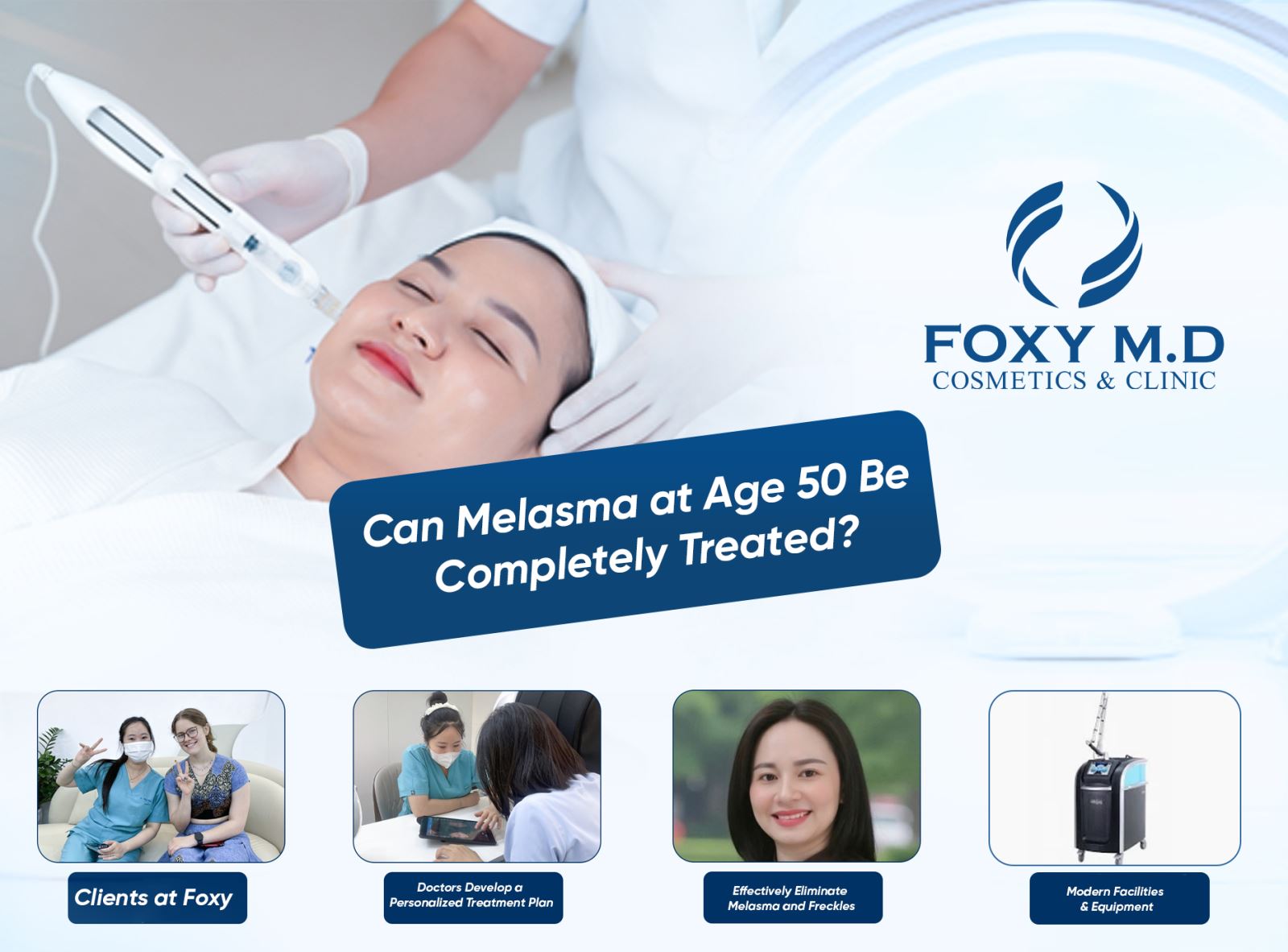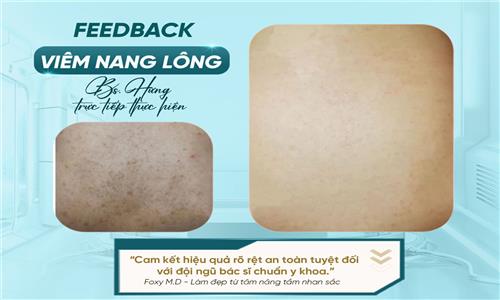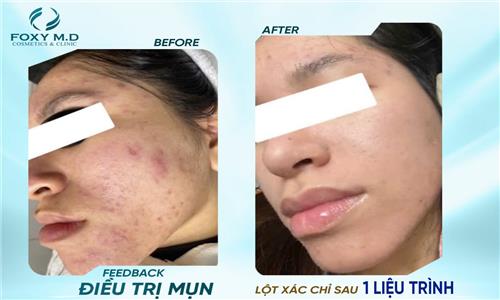Can Melasma at Age 50 Be Completely Treated?
Melasma at the age of 50 is always a concern that makes many people feel less confident in daily communication.
Especially at this age, the skin structure changes significantly, hormone levels decline, making melasma spread more easily and appear darker than before.
I understand this feeling, as many people have shared that they tried various methods but saw no improvement—or their melasma returned quickly.
So, can melasma at age 50 truly be cured?
The answer is: it can be significantly improved and remain stable long-term, but only when treated with the right technique, the right technology, and the right treatment protocol suitable for mature skin.
In this section, I will explain in detail the reasons why melasma is more common at age 50, how effective the treatment can be, and why Foxy can deliver outstanding results.

Can Melasma at Age 50 Be Treated? – Understand the Root Cause to Treat It Correctly
To know whether melasma at age 50 can be cured, we must first understand how melasma forms.
Melasma is not just a dark patch on the skin surface.
It is actually a pigmentation disorder where melanocyte cells produce too much melanin and push it upward toward the skin surface.
At age 50, this condition worsens because:
-
Estrogen levels drop significantly
-
Skin aging weakens the protective barrier
-
Skin recovery slows down
-
Light sensitivity increases
-
Sun damage accumulates over many years
Therefore, to treat melasma at age 50 effectively, you cannot rely on single methods like applying creams or using DIY masks.
A comprehensive protocol must target two layers:
-
Epidermis – improve visible pigmentation
-
Dermis – suppress melanocyte activity and prevent recurrence
This explains why many people in their 50s who self-treat at home only see slight improvements—or experience quick relapse.
Why Melasma at Age 50 Becomes Worse and Harder to Treat
Many people wonder why melasma is more difficult to treat at age 50 than at 20–30.
Below are the main causes based on real cases from Foxy clients aged 50+.
1. Hormonal decline
After age 45, ovarian function decreases, leading to lower estrogen levels.
Estrogen maintains skin firmness, brightness, and elasticity.
When it drops, melanin production increases, making melasma darker.
2. Skin aging – slower recovery
At age 50:
-
Collagen decreases rapidly
-
Elastin breaks down
-
Cell regeneration slows
This makes melasma penetrate deeper into the dermis, making treatment harder.
3. Accumulated sun exposure
Most older adults have spent years in the sun without proper protection.
Melanin buildup over time forms deep, stubborn patches.
4. Medications, health issues, and chronic stress
Certain medications (hormonal drugs, epilepsy drugs, chronic disease treatments) increase pigmentation risk.
Long-lasting stress also disrupts skin pigmentation.
Despite these challenges, melasma at age 50 can still improve 70–90% when treated properly and monitored regularly.
Common Types of Melasma in People Over 50
To treat melasma accurately, you must first identify the correct type, as each responds differently to treatment.

Epidermal Melasma
Large patches, light or dark brown.
This type is common and improves quickly if treated early.
Dermal Melasma
Melanin is deep within the dermis.
More difficult and requires advanced technology and longer treatment.
Mixed Melasma
A combination of epidermal and dermal melasma.
Most common in people aged 50.
Easily worsens if treated incorrectly.
At Foxy, clients receive multi-point skin scanning to determine:
-
Type of melasma
-
Depth
-
Spread level
This ensures safer, more accurate treatment than guessing or using generic methods.
Melasma Treatment at Age 50 at Foxy – Personalized Solutions
When asked “Can melasma at age 50 be treated?”, I always emphasize:
There is no one-size-fits-all protocol.
Especially for mature skin, every client requires a customized treatment plan.
Below are Foxy’s main treatment methods—personalized for each individual.
1. Medical-grade Laser Protocol – Deep but Safe
Melasma laser treatment is NOT about using strong energy.
For age-50 skin, using the wrong wavelength or too much energy may cause:
-
Skin damage
-
Post-inflammatory hyperpigmentation
-
Darker melasma
At Foxy, laser energy is adjusted microscopically:
-
Low to medium energy
-
Melanin-selective wavelength
-
Deep impact without damaging skin structure
Benefits:
-
Reduces deep melasma
-
Brightens the skin tone
-
Stimulates collagen production
All procedures are performed by certified, experienced technicians.
2. Skin-brightening Peel – Surface Renewal Support
Peels are suitable for epidermal or mixed melasma.
Foxy uses concentrations designed for mature skin:
-
Fades surface pigmentation
-
Softens the skin
-
Enhances absorption of active ingredients
Incorrect at-home peeling often causes redness, peeling, or darkening.
Professional technique is essential.
3. At-home Support Products – Prevent Recurrence
.jpg)
Skin at age 50 is prone to relapsing melasma if not cared for properly.
Foxy provides tailored routines:
-
Brightening serum
-
Regenerating cream
-
Barrier-repair moisturizer
-
High-SPF sunscreen
This helps maintain long-term results.
4. Regular Skin Recovery – Key to Smooth, Radiant U50 Skin
Many people relapse elsewhere but stay stable at Foxy because treatments are paired with recovery sessions:
-
Micro-rejuvenation
-
Deep hydration
-
Oxygen therapy
-
Biological skin regeneration
Healthy skin responds better to laser and peel therapy.
Cost of Melasma Treatment at Age 50 at Foxy
A common question is:
“How much does melasma treatment at age 50 cost?”
Due to industry regulations, Foxy does not publicly list exact prices.
However, treatments are priced reasonably for middle-aged clients who want safe, long-lasting improvement.
The cost varies depending on the personalized protocol.
Factors affecting treatment cost:
-
Severity and depth of melasma
-
Technology used
-
Number of sessions
-
At-home skincare products
-
Expertise of practitioner
Foxy’s Standard Treatment Process – Why People Over 50 Should Choose Foxy
1. 8-point skin scanning
Identifies:
-
Type of melasma
-
Depth
-
Area affected
-
Skin aging level
2. Medical-grade cleansing and softening
3. Laser and peel application
Laser energy is micro-adjusted for age-50 skin.
Peels use low to medium strength.
4. Deep recovery
Reduces redness, strengthens the barrier, prevents darkening.
5. Regular follow-ups
Laser settings and methods are adjusted if needed.
How Long Until Melasma Improves?
Results for clients aged 50 typically follow:
-
2–3 sessions: Brighter skin, light reduction
-
4–6 sessions: Clear fading of epidermal melasma
-
8–12 sessions: Dermal melasma reduced 60–80%
-
Full course: 70–90% improvement depending on skin
Melasma at age 50 cannot disappear 100% forever, as melanin remains in the skin.
However, with proper treatment and care, recurrence can be minimized or remain very mild.
Frequently Asked Questions (FAQ)
1. Is laser dangerous for age-50 skin?
No—when used correctly with proper wavelength and energy.
2. Does treatment hurt?
Barely. Only mild tingling.
3. Can long-term melasma be eliminated?
Not completely, but can improve 70–90% with long-lasting stability.
4. Will melasma return?
It can be stable long-term with proper care.
5. Can thin skin be treated?
Yes—skin is strengthened first.
6. Is downtime required?
No—normal activities can continue.
Conclusion – Can Melasma at Age 50 Be Cured?
Melasma at age 50 can improve significantly when:
-
Skin is correctly analyzed
-
A personalized protocol is applied
-
Proper technology is used
-
At-home care is followed
At Foxy, every client receives a customized treatment plan tailored to their skin condition, helping shorten treatment time and maintain stable, long-lasting results.
Tin xem nhiều
Tin mới nhất
Các tin khác

Nám da ở tuổi 50 liệu có chữa khỏi được không?

Viêm nang lông – Nguyên nhân, cách điều trị và phòng ngừa tái phát

Feedback điều trị mụn – Bí quyết da sạch mụn, sáng khỏe


















